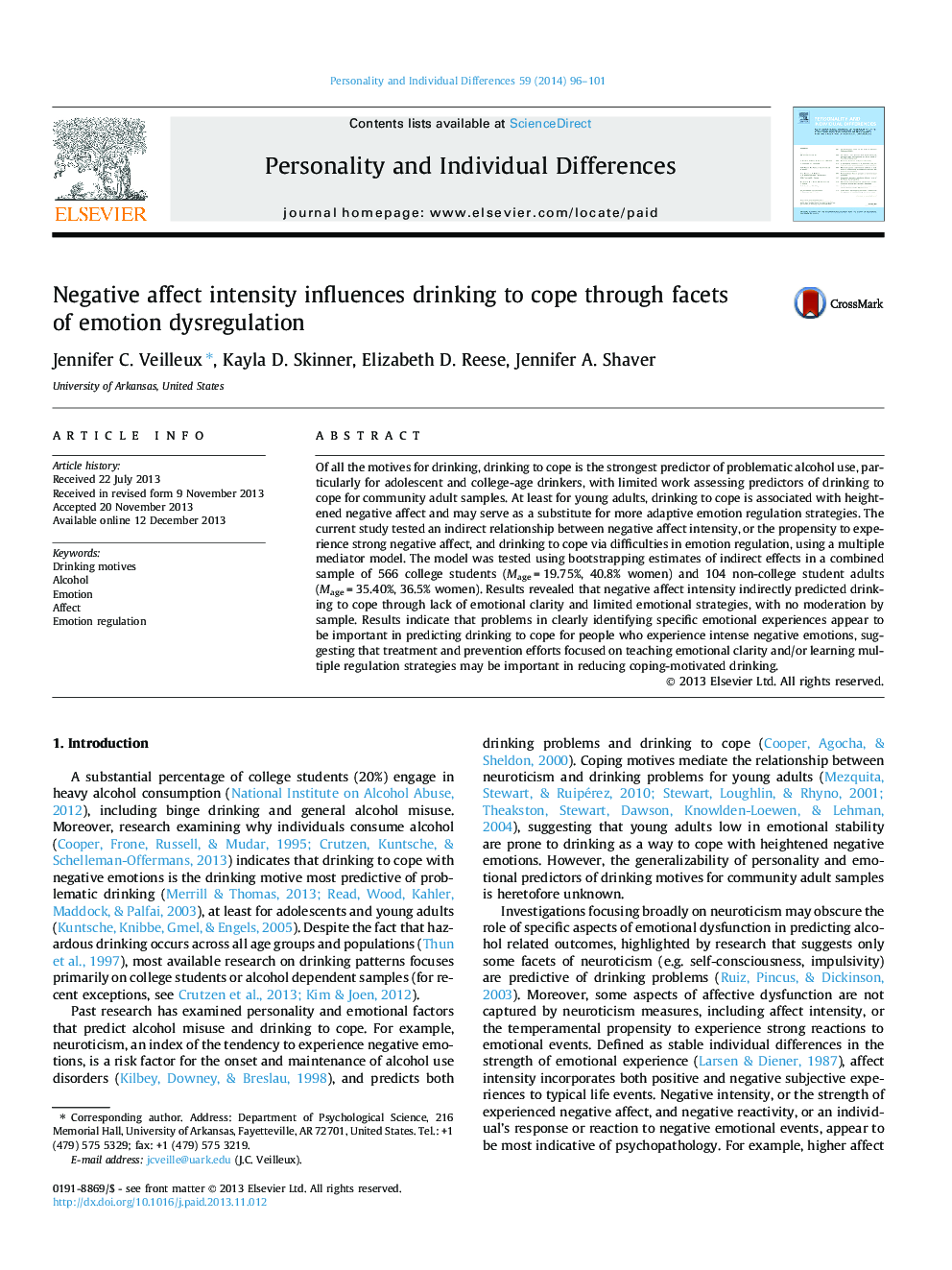| Article ID | Journal | Published Year | Pages | File Type |
|---|---|---|---|---|
| 890742 | Personality and Individual Differences | 2014 | 6 Pages |
•Examined emotion dysregulation as mediator of affect intensity and drinking to cope.•Negative intensity influenced drinking to cope indirectly via emotional clarity.•Negative intensity influenced drinking to cope indirectly via regulation strategies.•Negative reactivity did not directly or indirectly predict drinking to cope.•No moderation by sample; college students and non-college adults had same pattern.
Of all the motives for drinking, drinking to cope is the strongest predictor of problematic alcohol use, particularly for adolescent and college-age drinkers, with limited work assessing predictors of drinking to cope for community adult samples. At least for young adults, drinking to cope is associated with heightened negative affect and may serve as a substitute for more adaptive emotion regulation strategies. The current study tested an indirect relationship between negative affect intensity, or the propensity to experience strong negative affect, and drinking to cope via difficulties in emotion regulation, using a multiple mediator model. The model was tested using bootstrapping estimates of indirect effects in a combined sample of 566 college students (Mage = 19.75%, 40.8% women) and 104 non-college student adults (Mage = 35.40%, 36.5% women). Results revealed that negative affect intensity indirectly predicted drinking to cope through lack of emotional clarity and limited emotional strategies, with no moderation by sample. Results indicate that problems in clearly identifying specific emotional experiences appear to be important in predicting drinking to cope for people who experience intense negative emotions, suggesting that treatment and prevention efforts focused on teaching emotional clarity and/or learning multiple regulation strategies may be important in reducing coping-motivated drinking.
